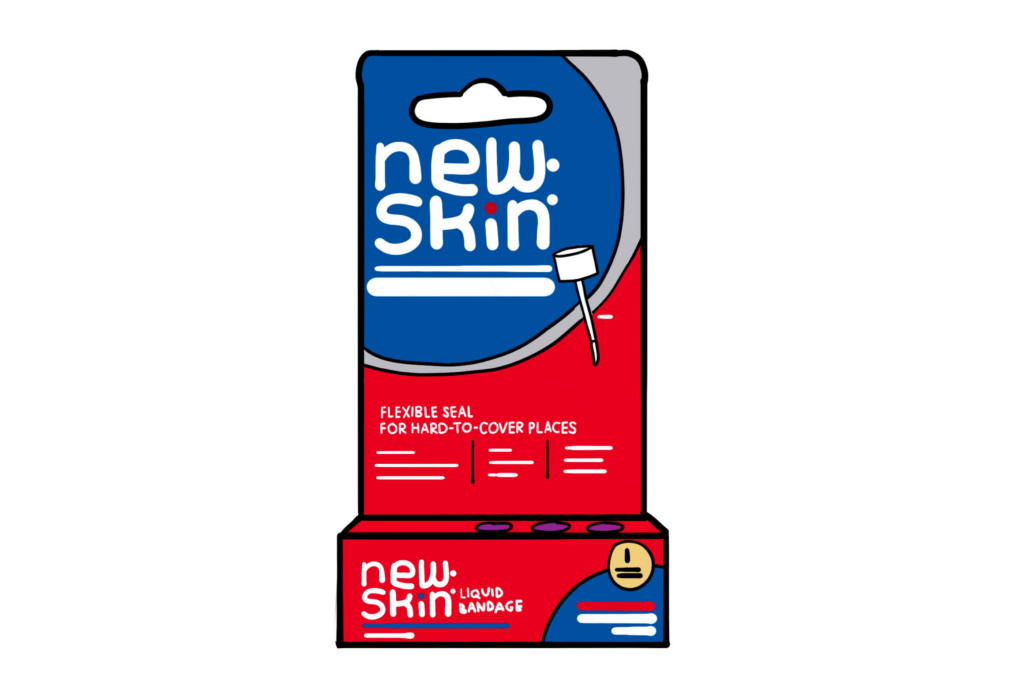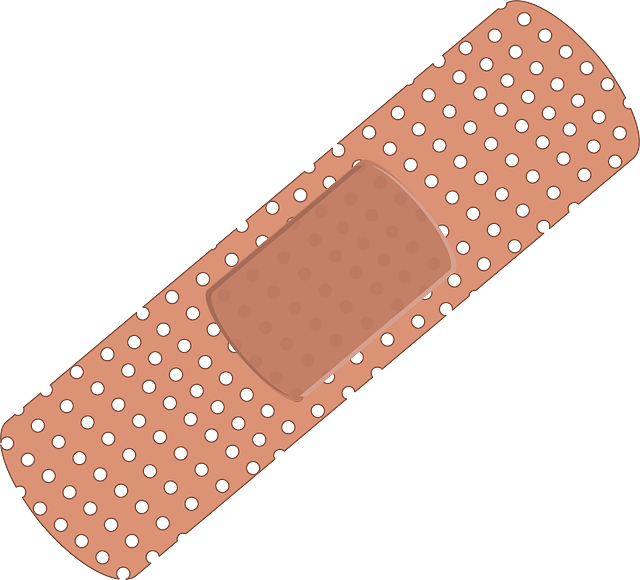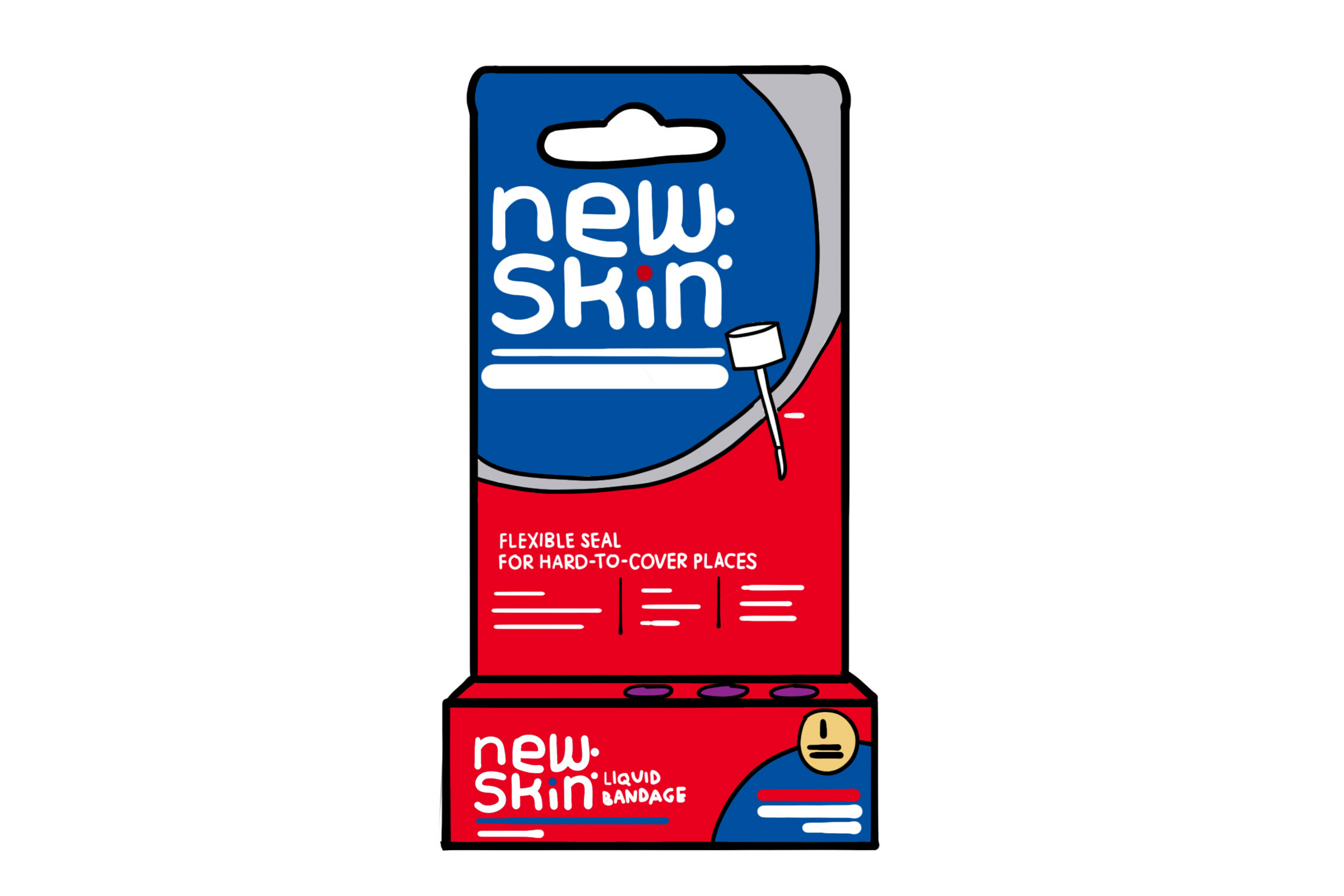New-Skin® Liquid Bandage: Are Liquid Bandages the Way to Cover Wounds?
What is New-Skin Liquid Bandage?
New-Skin Liquid Bandage is an alternative to the conventional bandage that can be found at the majority of drugstores in Canada. It is a liquid formulation bandage that is brushed onto minor wounds such as cuts or sores to protect them from infection. The liquid is left to dry, forming a seal that is waterproof, antibacterial, and flexible – similar to that of a typical Band-Aid®. Generally, the majority of people still use bandages to cover wounds due to familiarity reasons; however, using a liquid bandage such as New-Skin may be helpful in some situations. Read on!

New-Skin Liquid Bandage Ingredients
Medicinal Ingredient:
Benzethonium Chloride 0.2%
Non-Medicinal Ingredients:
Amyl acetate, camphor, ethyl acetate, ethyl alcohol, n-butyl acetate, nitrocellulose
How Does New-Skin Liquid Bandage Work?
The “Liquid Bandage” is a mixture of chemicals (most importantly benzethonium chloride, nitrocellulose and castor oil) that remains in liquid form until brushed onto the wound. Once it dries, it forms a seal to block out dirt and bacteria. In addition, this protective layer will also reduce pain by blocking nerve endings in the wound and keep the wound covered[1].
Does New Skin Liquid Bandage Work? What Does The Evidence Say?
More and more clinical evidence suggests that wounds heal faster in moist environments when they are properly covered[2]. But, when it comes to covering up for minor cuts and scrapes, there are currently no studies directly comparing the effectiveness of liquid bandages to other regular wound dressings (such as Band-Aids®). There is not too much evidence on many of the ingredients in New-Skin, but here is what we found:
- Benzethonium chloride: is a powerful antiseptic and antibacterial skin cleanser to prevent infection[3].
- Nitrocellulose: has been used for many years to create a dressing for wounds (and is also used in nailpolish!). Studies in mice have shown that it helps prevent infection and improved healing[4].
- Castor oil: is used as an occlusive agent (to prevent water loss from skin) and is used to help with wound healing[5].
Are There Any Safety Concerns With New Skin Liquid Bandage?
Benzethonium chloride has been associated with cases of atopic dermatitis and skin irritation[6]. Benzethonium chloride is classifed as a quaternary ammonium cation (quats), while the name sounds cool, these ‘strucutres’ have been known to cause irritation. We would suggest avoiding this if your skin is highly sensitive or you have a known allergy to these ingredients[7][8].
Fast Fact: Benzethonium chloride is classified as a quat: quaternary ammonium cation because of it’s chemical structure. Other examples of quats include: benzalkonium chloride and methylbenzethonium chloride. They are commonly used in disinfectants, fabric softeners, and prevent plant growth.
Another study showed that benzethonium chloride is irritating at concentrations greater than 5% but were safe at concentrations of 0.5% in cosmetics applied to the skin (the concentration of benzethonium chloride is 0.2% in New-Skin Liquid Bandage)[9].
What seems to be unknown are toxicological effects of benzethonium chloride at a cellular level and the longer term impacts on health[10]. There already seems to be concern from studies on mice that this ingredient may play a role in gut diseases such as inflammatory bowel disease[11].
What Other Alternatives Are There?
A popular alternative to the Liquid Bandage is the conventional adhesive bandage (the kind that sticks on to your skin). Adhesive bandages come in different forms and can have added antibacterial or moisturizers depending on the product. The main complaint with the adhesive bandage is that it has more of a physical presence and isn’t as flexible as the liquid bandage. However, the adhesive bandage is cheaper and works just as well.

When Should I Use New-Skin Liquid Bandage?
Liquid bandage can be used for minor cuts and wounds that require the wound to close and bleeding to stop or to prevent infection[12]. It may be especially useful if you need to temporarily cover a cut or wound in an area that an adhesive bandage may not stick or likely to fall off.
Avoid using[12] :
- Over large areas of the body
- In or around the eyes
- Longer than one week unless directed by a doctor
- On infected areas or wounds that are draining
- With other first-aid products such as lotions and creams
- Over sutures
- On mucous membranes
- In children under 2 years old[2]
It should not be used if there is no improvement or if an infection starts. You should see a qualified health care professional if your injury involves deep puncture wounds, serious burns, animal bites or an infection (yellow pus, pain and redness around site). Seek help if the bleeding doesn’t stop after 10 minutes of directly applying pressure directly on the wound, you have a fever, or severe pain[12].
How Do I Apply New-Skin Liquid Bandage?
According to the New-Skin Liquid Bandage Website[12]:
- Clean affected area
- Apply small amount on the area (can be used from 1–3 times daily)
- Let dry
- A second coating may be applied for extra protection
- To remove, apply more New-Skin Liquid Spray Bandage and quickly wipe of
Bottom Line
New-Skin Liquid Bandage may protect minor cuts and wound from possible infection and speed up healing time (versus if they are just left open). There has been no study directly comparing New-Skin to conventional bandages so we can’t say it’s better. New-Skin Liquid Bandage may be helpful for places that regular adhesive bandages don’t stay on or need some flexibility to move around. The medicinal ingredient benzethonium chloride may be irritating in those that have sensitive skin and the long-term health benefits are unknown but seem a little concerning.
Where Can I Buy New-Skin Liquid Bandage in Canada?
In Canada, this product can be bought in-person from any pharmacy or drug store or online from:

Authors
Andrew Hoang, Kevin Huie, Cyrus Lau, Kody Lee, Ibrahim Mourad, Tiffany Tang, Hugo Tse
Faculty of Pharmacy and Pharmaceutical Sciences
University of Alberta
Edited and Reviewed by the Health Aisle Team
References
1. Paulson D. (2002). Handbook of Topical Antimicrobials: Industrial Applications in Consumer Products and Pharmaceuticals. CRC Press.
2. Svensjö T, Pomahac B, Yao F et al. (2000). Accelerated healing of full-thickness skin wounds in a wet environment. Plast Reconstr Surg., 106(3):602-12
3. Health Canada. (2018). Antiseptic Skin Cleansers (Domestic / Personal Use) Monograph. Health Products and Food Branch.
4. Mu X, Yu H, Zhang C et al. (2016). Nano-porous nitrocellulose liquid bandage modulates cell and cytokine response and accelerates cutaneous wound healing in a mouse model. Carbohydr Polym, 136:618-29. doi: 10.1016/j.carbpol.2015.08.070.
5. LexiComp. (2019) Balsam peru and castor oil: Drug information. Retrieved from: https://www.uptodate.com/contents/balsam-peru-and-castor-oil-drug-information
6. Hirata Y, Yanagi T, Yamaguchi Y. et al. 2017. Ulcerative contact dermatitis caused by benzethonium chloride. Contact Dermatitis. 76(3):188-190. doi: 10.1111/cod.12682.
7. Dao. H,J., Fricker. C, Nedorost. S.T., Sensitization Prevalence for Benzalkonium Chloride and Benzethonium Chloride, American Dermatitis Society. 2014. Vol 23.(4): pp 162
8. Wentworth AB1, Yiannias JA, Davis MD, et al. 2016. Benzalkonium Chloride: A Known Irritant and Novel Allergen. Dermatitis, 27(1):14-20. doi: 10.1097
9. Liebert, M. A., Final Report on the Safety Assessment of Benzethonium Chloride and Methylbenzethonium Chloride, International Journal of Toxicology. 2005. Vol 4(5): pp 65-66.
10. Sreevidya VS, Lenz KA, Svoboda KR. (2018). Benzalkonium chloride, benzethonium chloride, and chloroxylenol – Three replacement antimicrobials are more toxic than triclosan and triclocarban in two model organisms. Environ Pollut. 235:814-824. doi: 10.1016
11. Sanidad K., Yang H., Wang W., et al., (2018). Effects of Consumer Antimicrobials Benzalkonium Chloride, Benzethonium Chloride, and Chloroxylenol on Colonic Inflammation and Colitis-Associated Colon Tumorigenesis in Mice. Toxicological Sciences, 163(2); 490–499 https://doi.org/10.1093/toxsci/kfy045
12. New Skin Liquid Bandage. (2019) Retrieved from: https://www.newskinproducts.com/products/new-skin-liquid-bandage/
